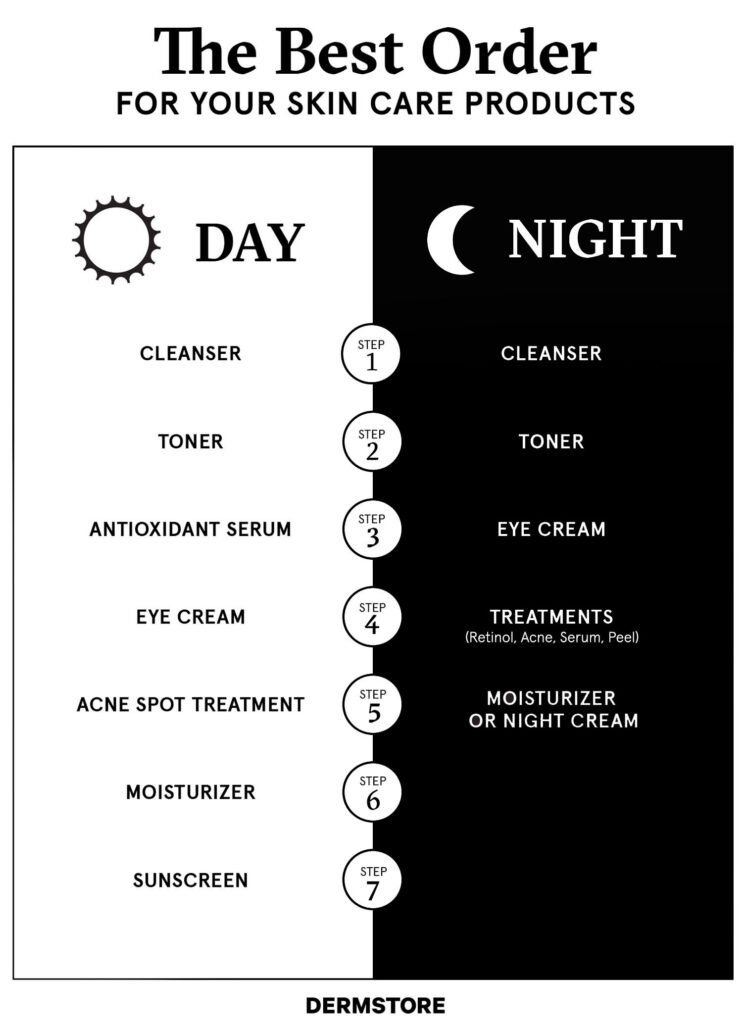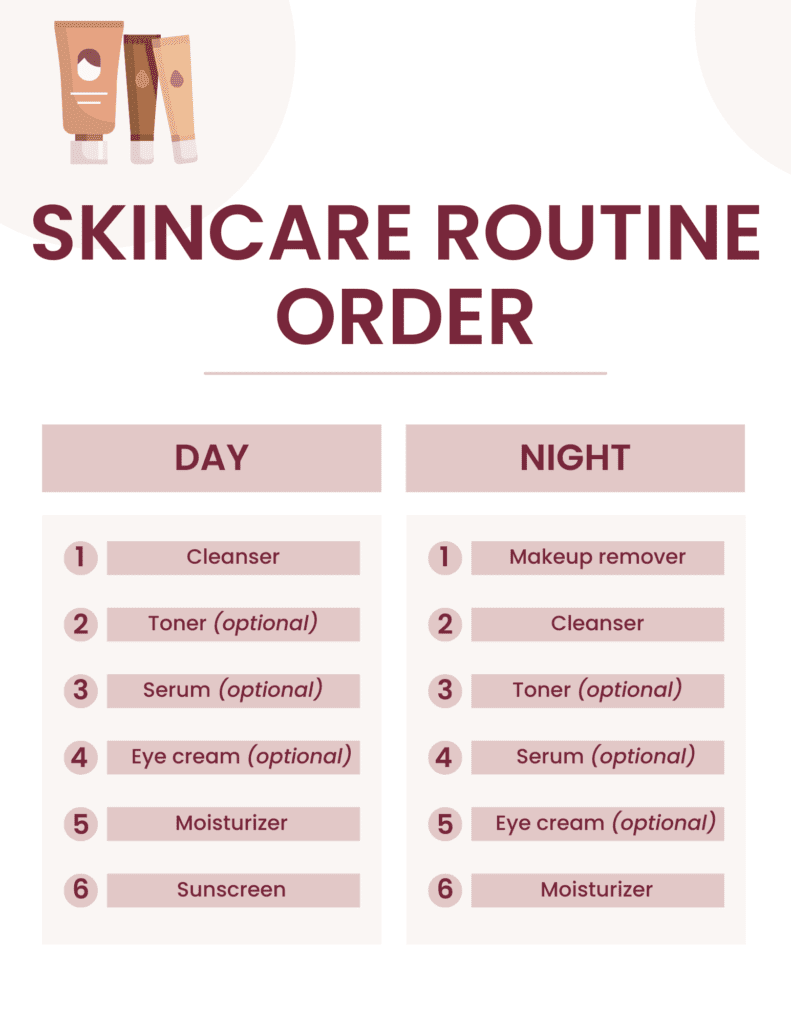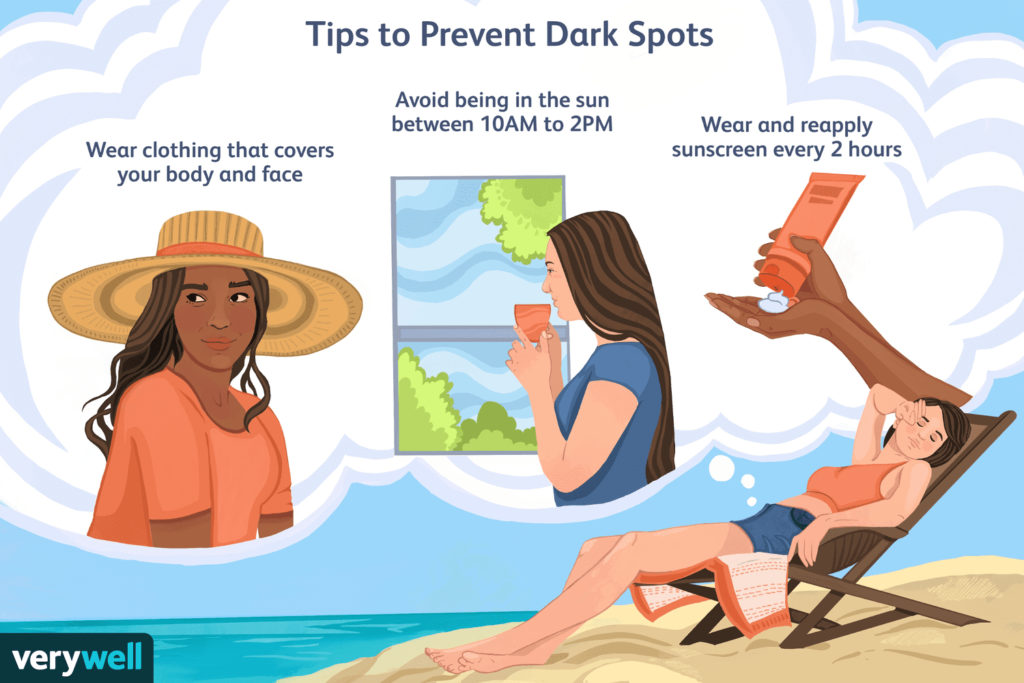
Introduction
Oilyskin care routine Navigating the challenges of oilyskin requires a specialized skincare routine tailored to effectively manage excess sebum production while maintaining a healthy and radiant complexion. Oily skin is characterized by a heightened production of natural oils, often leading to concerns such as acne, enlarged pores, and a persistent shine. However, with the right approach, you can harness the power of proper skincare to bring balance to your skin and achieve a more confident look.
In this skincare guide, we will delve into a comprehensive oily skin care routine designed to address the unique needs of oily-prone skin. By incorporating targeted steps and selecting suitable products, you can effectively manage oiliness, reduce breakouts, and nurture your skin to its optimal state.
Embarking on this journey requires an understanding of your skin’s biology and the factors that contribute to excess oil production. From cleansing techniques that don’t disrupt the skin’s natural equilibrium to selecting the right serums and moisturizers, each step is meticulously crafted to create a harmonious routine. Alongside product recommendations, we’ll also explore the importance of protection against harmful UV rays and the role of diet and hydration in maintaining vibrant skin.
Remember, achieving the desired results takes time and dedication. As you commit to this routine, observe how your skin responds and make adjustments as needed. With patience and consistency, you’ll uncover the path to a healthier, more balanced complexion that empowers you to put your best face forward.
Oily skincare routines at night
Nighttime oliyskincare routines for oily skin are crucial for repairing and rejuvenating your skin while you sleep, as well as controlling excess oil production. Here’s a step-by-step guide to an effective oily skin care routine at night:
- Makeup Removal: Start by thoroughly removing any makeup, sunscreen, and dirt using a gentle makeup remover or micellar water. This step ensures your skin is clean and ready for the rest of your routine.
- Cleansing: Cleanse your face with a gentle, oil-free cleanser to eliminate any remaining impurities. Look for a cleanser with salicylic acid or glycolic acid to help exfoliate and prevent clogged pores.
- Exfoliation (2-3 Times a Week): On nights when you’re exfoliating, apply a chemical exfoliant containing AHAs (like glycolic or lactic acid) or BHAs (salicylic acid). These ingredients help remove dead skin cells and control oil production. Avoid physical scrubs, as they can be too abrasive for oily skin.
- Toning: Apply a gentle, alcohol-free toner using a cotton pad or your fingertips. Toners help balance your skin’s pH levels and tighten pores. Niacinamide-enriched toners can be particularly beneficial for controlling oil.
- Serums: Use an oil-free or lightweight serum that addresses specific concerns. Niacinamide, hyaluronic acid, and salicylic acid are great options for oily skin. Apply the serum evenly on your face and neck.
- Spot Treatment: If you have active breakouts, apply a targeted treatment with benzoyl peroxide or salicylic acid. Use it only on the affected areas to avoid over-drying the rest of your skin.
- Moisturizing: Even for oily skin, moisturizing is essential to maintain a healthy moisture barrier. Opt for an oil-free, non-comedogenic moisturizer. Gel-based or water-based formulas work well for oily skin types.
- Eye Cream: Apply a lightweight, hydrating eye cream around the delicate eye area to keep it moisturized. Look for a product with hyaluronic acid or peptides.
- Optional: Overnight Mask or Treatment (1-2 Times a Week): Incorporate an oil-absorbing clay mask or a hydrating overnight mask into your routine a couple of times a week. This can provide additional benefits like minimizing pores and reducing excess oil.
- Hydrating Lip Balm: Don’t forget to apply a hydrating lip balm to keep your lips moisturized overnight.
- Pillowcase and Hair Care: Use a clean pillowcase and tie your hair back to prevent excess oil and products from transferring to your face during the night.
By following this nighttime skincare routine tailored to oily skin, you can effectively manage oil production, prevent breakouts, and wake up to a refreshed and revitalized complexion. Remember that consistency is key, and adjustments may be needed based on your skin’s response. If you’re uncertain about specific products, consider consulting a dermatologist for personalized recommendations.
Oily skin care routines in India
Certainly, here’s a tailored oily skin care routine suitable for individuals living in India, taking into account the climate and availability of products:
Morning Routine:
- Cleansing: Use a gentle, oil-free or gel-based cleanser to cleanse your face and remove any excess oil that has accumulated overnight.
- Toning: Apply a mild alcohol-free toner to balance your skin’s pH levels and prep it for the next steps.
- Serum: Opt for a lightweight serum with ingredients like niacinamide to control oil production and maintain skin barrier health.
- Sunscreen: Apply a broad-spectrum sunscreen with at least SPF 30. Look for sunscreens labeled as “oil-free” or “matte finish.” Reapply every 2-3 hours, especially if you’re going to be outdoors.
- Mattifying Primer (Optional): If you wear makeup, consider using a mattifying primer before applying makeup to help control oil throughout the day.
Daytime Tips:
- Blotting sheets can be handy to absorb excess oil during the day without disturbing your makeup.
- Stay hydrated by drinking plenty of water, especially considering the hot and humid climate in many parts of India.
Evening Routine:
- Makeup Removal and Cleansing: Start with a gentle makeup remover or micellar water to remove makeup and sunscreen. Follow up with an oil-free or gel-based cleanser.
- Exfoliation (2-3 Times a Week): Use a chemical exfoliant containing AHAs or BHAs to unclog pores and remove dead skin cells. Over-exfoliation can lead to sensitivity, so be cautious.
- Toning: Apply a toner with pore-refining and oil-balancing ingredients like witch hazel or niacinamide.
- Serum: Consider using a serum with salicylic acid to help prevent breakouts and control excess oil.
- Moisturizer: Apply an oil-free, non-comedogenic moisturizer to keep your skin hydrated without making it greasy.
- Spot Treatment: If you have active breakouts, use a targeted treatment with benzoyl peroxide or salicylic acid on affected areas.
- Weekly Mask (1-2 Times a Week): Incorporate a clay mask or a purifying mask to help control oil and deep-cleanse pores.
Nighttime Tips:
- Make sure to remove your makeup and cleanse your face before going to bed to prevent clogged pores.
- Use a humidifier in your room if you’re in a particularly dry area.
Remember, everyone’s skin is different, so adjust the routine based on your skin’s response. Additionally, due to varying climatic conditions in India, you might need to adapt the routine seasonally. It’s a good idea to consult with a dermatologist if you have specific concerns or need personalized recommendations for products available in India.
Oily skin care routines at home
Certainly, here’s a tailored oily skin care routine suitable for individuals living in India, taking into account the climate and availability of products:
Morning Routine:
- Cleansing: Use a gentle, oil-free or gel-based cleanser to cleanse your face and remove any excess oil that has accumulated overnight.
- Toning: Apply a mild alcohol-free toner to balance your skin’s pH levels and prep it for the next steps.
- Serum: Opt for a lightweight serum with ingredients like niacinamide to control oil production and maintain skin barrier health.
- Sunscreen: Apply a broad-spectrum sunscreen with at least SPF 30. Look for sunscreens labeled as “oil-free” or “matte finish.” Reapply every 2-3 hours, especially if you’re going to be outdoors.
- Mattifying Primer (Optional): If you wear makeup, consider using a mattifying primer before applying makeup to help control oil throughout the day.
Daytime Tips:
- Blotting sheets can be handy to absorb excess oil during the day without disturbing your makeup.
- Stay hydrated by drinking plenty of water, especially considering the hot and humid climate in many parts of India.
Evening Routine:
- Makeup Removal and Cleansing: Start with a gentle makeup remover or micellar water to remove makeup and sunscreen. Follow up with an oil-free or gel-based cleanser.
- Exfoliation (2-3 Times a Week): Use a chemical exfoliant containing AHAs or BHAs to unclog pores and remove dead skin cells. Over-exfoliation can lead to sensitivity, so be cautious.
- Toning: Apply a toner with pore-refining and oil-balancing ingredients like witch hazel or niacinamide.
- Serum: Consider using a serum with salicylic acid to help prevent breakouts and control excess oil.
- Moisturizer: Apply an oil-free, non-comedogenic moisturizer to keep your skin hydrated without making it greasy.
- Spot Treatment: If you have active breakouts, use a targeted treatment with benzoyl peroxide or salicylic acid on affected areas.
- Weekly Mask (1-2 Times a Week): Incorporate a clay mask or a purifying mask to help control oil and deep-cleanse pores.
Nighttime Tips:
- Make sure to remove your makeup and cleanse your face before going to bed to prevent clogged pores.
- Use a humidifier in your room if you’re in a particularly dry area.
Remember, everyone’s skin is different, so adjust the routine based on your skin’s response. Additionally, due to varying climatic conditions in India, you might need to adapt the routine seasonally. It’s a good idea to consult with a dermatologist if you have specific concerns or need personalized recommendations for products available in India.
oily skin care routine for oily skin

Certainly, here’s a simplified yet effective oily skin care routine for individuals with oily skin:
Morning Routine oily skincare routine
- Cleansing: Wash your face with a gentle, oil-free cleanser to remove excess oil and impurities from overnight.
- Toning: Apply an alcohol-free toner to balance your skin’s pH and minimize pores. Look for toners containing ingredients like witch hazel or tea tree oil.
- Oil-Free Moisturizer: Use a lightweight, oil-free moisturizer to keep your skin hydrated without adding excess oil.
- Sunscreen: Apply a broad-spectrum sunscreen with SPF 30 or higher to protect your skin from UV damage. Opt for a sunscreen labeled as “oil-free” or “matte finish.”
Daytime Tips for oily skincare routine
- If you wear makeup, consider using oil-free, non-comedogenic makeup products.
- Blotting papers can help absorb excess oil throughout the day without disturbing your makeup.
Evening Routine for oily skincare routine
- Makeup Removal and Cleansing: Remove makeup and sunscreen with a gentle makeup remover or micellar water, followed by an oil-free cleanser.
- Toning: Apply the same toner from your morning routine to maintain skin balance.
- Oil-Control Serum (Optional): If you prefer, apply a serum containing ingredients like niacinamide or salicylic acid to control oil production and prevent breakouts.
- Lightweight Moisturizer: Reapply a lightweight, non-comedogenic moisturizer to keep your skin hydrated overnight.
Nighttime Tips for oily skincare routine
- Avoid over-cleansing, as this can lead to excessive dryness and trigger more oil production.
- Use a silk or satin pillowcase to reduce friction and potential irritation while you sleep.
Weekly Additions for oily skincare routine
- Exfoliation (1-2 Times a Week): Include a gentle exfoliation using a chemical exfoliant with AHAs or BHAs to unclog pores and improve skin texture.
- Clay Mask (1-2 Times a Week): Apply a clay mask to absorb excess oil and deep-cleanse your pores.
Remember that consistency is key, and it might take time to see noticeable improvements. If you experience persistent acne or skin issues, consider consulting a dermatologist for personalized advice and recommendations tailored to your specific skin needs.
Conclusion
In conclusion, maintaining a well-rounded and consistent skincare routine is essential for managing oily skin and achieving a healthy, balanced complexion. By following the guidelines outlined in this skincare routine, you can effectively address excess oil production, prevent breakouts, and promote overall skin health. Remember that everyone’s skin is unique, so it’s important to tailor your routine to your specific needs and observe how your skin responds to different products and steps.
Consistency is key; don’t expect instant results, as it may take time for your skin to show noticeable improvements. Be patient and stay committed to your routine. Alongside your skincare regimen, adopting a healthy lifestyle, including proper hydration, a balanced diet, and managing stress, can significantly contribute to the overall well-being of your skin.
If you encounter persistent issues or if you’re uncertain about specific products, it’s always a good idea to consult with a dermatologist. They can provide personalized advice, recommend suitable products, and address any unique concerns you might have.
With dedication, patience, and the right approach, you’re well on your way to achieving radiant, healthy skin that reflects your inner confidence.
FAQs
here are some frequently asked questions (FAQs) related to oily skin care:
1. How can I control excess oil on my face throughout the day?
Using oil-absorbing blotting sheets can help remove excess oil without disrupting your makeup. Additionally, avoiding heavy or greasy products and using a mattifying primer before applying makeup can help control oil.
2. Can I skip moisturizer if I have oily skin?
No, even oily skin needs hydration. Opt for lightweight, oil-free moisturizers that won’t clog your pores. Skipping moisturizer can actually lead to increased oil production as your skin tries to compensate for the lack of moisture.
3. Can I use oils on my oily skin? Certain oils like jojoba oil or grapeseed oil can be beneficial for oily skin, as they can help regulate oil production. However, it’s important to choose non-comedogenic oils and use them in moderation.
4. Is exfoliation necessary for oily skin?
Yes, exfoliation helps to remove dead skin cells, unclog pores, and prevent breakouts. Use a gentle chemical exfoliant (AHAs or BHAs) 2-3 times a week, and avoid harsh physical scrubs that can irritate the skin.
5. Should I avoid makeup if I have oily skin?
No, you can definitely wear makeup if you have oily skin. Opt for oil-free, non-comedogenic makeup products and use a mattifying primer before applying makeup. Proper cleansing at the end of the day is crucial to prevent clogged pores.
6. Can diet affect oily skin?
While diet isn’t the primary cause of oily skin, it can contribute to overall skin health. A balanced diet rich in fruits, vegetables, whole grains, and lean proteins can support healthy skin.
7. Can I use DIY masks for oily skin?
Yes, DIY masks using ingredients like clay, yogurt, honey, and aloe vera can be beneficial for oily skin. However, always do a patch test first and be cautious of potential allergies or adverse reactions.
8. How can I prevent my makeup from melting off due to oiliness?
Using a mattifying primer before applying makeup can help control oil and prolong makeup wear. Additionally, setting your makeup with a translucent powder can help absorb excess oil and keep your makeup in place.
9. Can hormonal changes impact oily skin?
Yes, hormonal fluctuations can influence oil production and lead to increased oiliness and breakouts. If you notice changes in your skin due to hormonal shifts, consider adjusting your skincare routine accordingly.
10. How long will it take to see results from my skincare routine?
It can take a few weeks to a couple of months to see noticeable results from a new skincare routine. Be patient and consistent, and don’t introduce too many new products at once, as this can overwhelm your skin.
Remember, everyone’s skin is unique, so what works for one person may not work for another. It’s important to find the right routine and products that suit your specific skin type and concerns. If you have persistent issues or questions, consider consulting a dermatologist for personalized guidance.
https://en.wikipedia.org/wiki/Skin_care
facial darkening skin tips click below 👇






